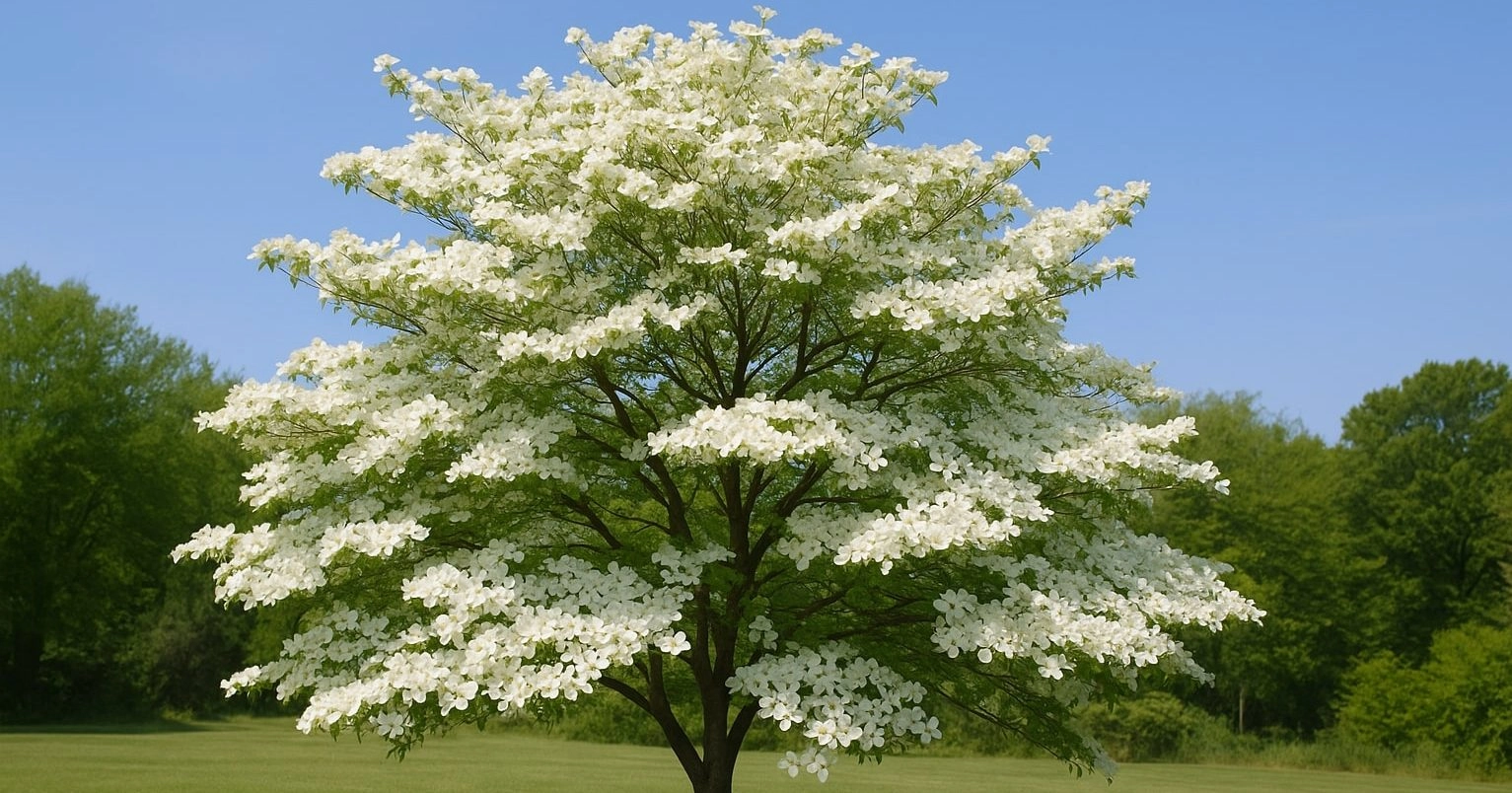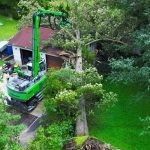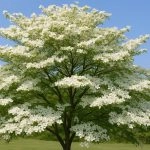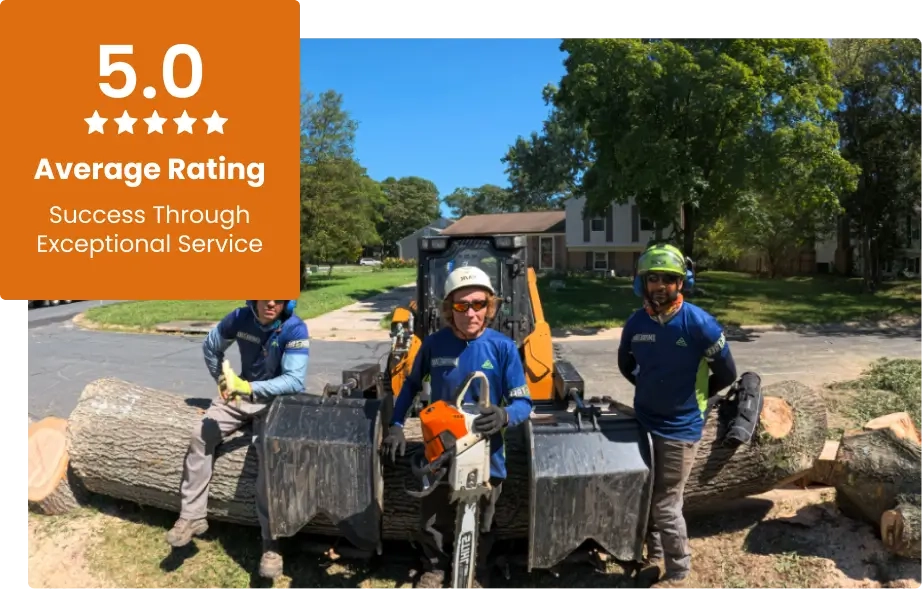- Services
- About Us
- Service Area
- Gallery
- Testimonials
- Blog
- Contact Us
- Critical Area Permit

September 30, 2025
The sight of a dogwood tree in full bloom is one of the great rewards of spring. Its delicate pink or white bracts brighten up the landscape and signal the start of warmer days. Homeowners across the South and beyond prize dogwood trees for their beauty, manageable size, and seasonal color. But as with any ornamental tree, a dogwood requires care, planning, and consistent attention to stay healthy.
At Empire Tree Service, we’ve helped countless homeowners plant, maintain, and restore their dogwood trees so they can thrive for decades. This guide will walk you through everything you need to know: from planting and watering to pruning, fertilizing, and protecting against pests and disease.
Understanding the Dogwood Tree
The dogwood tree (Cornus genus) includes dozens of varieties, but two are most common in home landscapes:
- Flowering Dogwood (Cornus florida): A native American tree, typically 15–30 feet tall, known for its spring bracts and red fall berries.
- Kousa Dogwood (Cornus kousa): Native to Asia, blooms later in summer, and is more resistant to anthracnose and other diseases.
Whichever type of dogwood tree you plant, most of the same care principles apply. The main differences are bloom timing and disease resistance.
Planting and Growing Conditions
Location Matters
The first step in caring for a dogwood tree is choosing the right spot. Dogwoods prefer:
- Sunlight: Morning sun and afternoon shade. Too much direct sun stresses the tree; too much shade limits flowering.
- Soil: Well-drained, slightly acidic soil rich in organic matter. Clay-heavy soil should be amended with compost or pine bark.
- Spacing: Adequate space for airflow reduces fungal problems and gives the tree room to spread naturally.
Planting Tips
- Dig a hole two to three times wider than the root ball but no deeper.
- Untangle circling roots before planting.
- Position the tree so the root collar (where trunk meets roots) is level with the soil.
- Backfill with native soil, water deeply, and apply 2–4 inches of mulch around (not against) the trunk.
Planting a dogwood tree correctly from the start reduces the risk of transplant shock and establishes healthy roots.
Dogwood Tree Care Basics
Watering
A newly planted dogwood tree needs consistent water. For the first two years, water once or twice a week to a depth of 6–12 inches. Mature dogwood trees can tolerate short dry spells but will perform better with occasional deep watering during summer heat.
- Always water in the morning to reduce evaporation.
- Avoid overwatering; dogwoods dislike “wet feet” and can develop root rot.
Fertilizing
Dogwoods don’t need heavy fertilization, but they benefit from occasional feeding.
- Skip fertilizer the first year after planting.
- For established dogwood trees, apply a slow-release, balanced fertilizer (such as 12-4-8) in early spring and again in midsummer.
- Conduct a soil test to avoid unnecessary nitrogen, which encourages leaf growth at the expense of blooms.
Mulching
Mulch helps dogwood trees by keeping roots cool, conserving water, and suppressing weeds. Apply fresh organic mulch annually in a 2–4 inch layer. Leave a gap at the trunk to prevent bark rot.
Pruning and Maintenance
Pruning a dogwood tree is usually minimal. These trees have a naturally graceful shape, so heavy pruning isn’t needed.
- Remove dead, diseased, or crossing branches in late fall or winter when the tree is dormant.
- Avoid pruning in spring, as it can cut off next season’s flower buds.
- Light thinning of the canopy improves airflow and reduces mildew risk.
If major pruning is required, especially near the trunk, it’s best to call a certified arborist. Improper cuts can leave a dogwood tree vulnerable to pests and disease.
Protecting Dogwoods from Pests and Diseases
Despite their resilience, dogwood trees are vulnerable to certain issues. Catching problems early is key.
- Dogwood Anthracnose: A fungal disease causing leaf spots and dieback. Prevent with proper airflow and by planting resistant varieties like Kousa dogwood.
- Powdery Mildew: A common white coating on leaves, especially in humid areas. Thin branches to improve air circulation.
- Dogwood Borer: Larvae that tunnel into the trunk, weakening the tree. Signs include sawdust at the base. Infested branches should be pruned.
- Scale Insects: Sap-sucking pests that cause sticky residue and sooty mold. Dormant oil sprays in winter can help.
Routine inspection and professional care from Empire Tree Service can keep these threats under control.
Seasonal Dogwood Tree Care Checklist
Keeping a simple seasonal schedule helps your dogwood tree thrive year-round:
- Spring: Fertilize if needed, monitor for pests, water young trees consistently.
- Summer: Deep water during hot, dry weeks; keep mulch refreshed.
- Fall: Continue watering until the ground freezes; inspect for late pest activity.
- Winter: Prune dead branches, protect young trees from deer or rodent damage.
Why Dogwood Trees Need Expert Care
A healthy dogwood tree is a long-term investment in your landscape. Planting and basic care are manageable for homeowners, but when it comes to disease treatment, pest management, or large pruning, professional help ensures the tree stays strong. Certified arborists understand the specific needs of dogwood trees and can prevent small issues from turning into costly problems.
Empire Tree Services is here to help you every step of the way, from planting and pruning to disease prevention. If you want expert assistance with your dogwood trees, contact us today.





